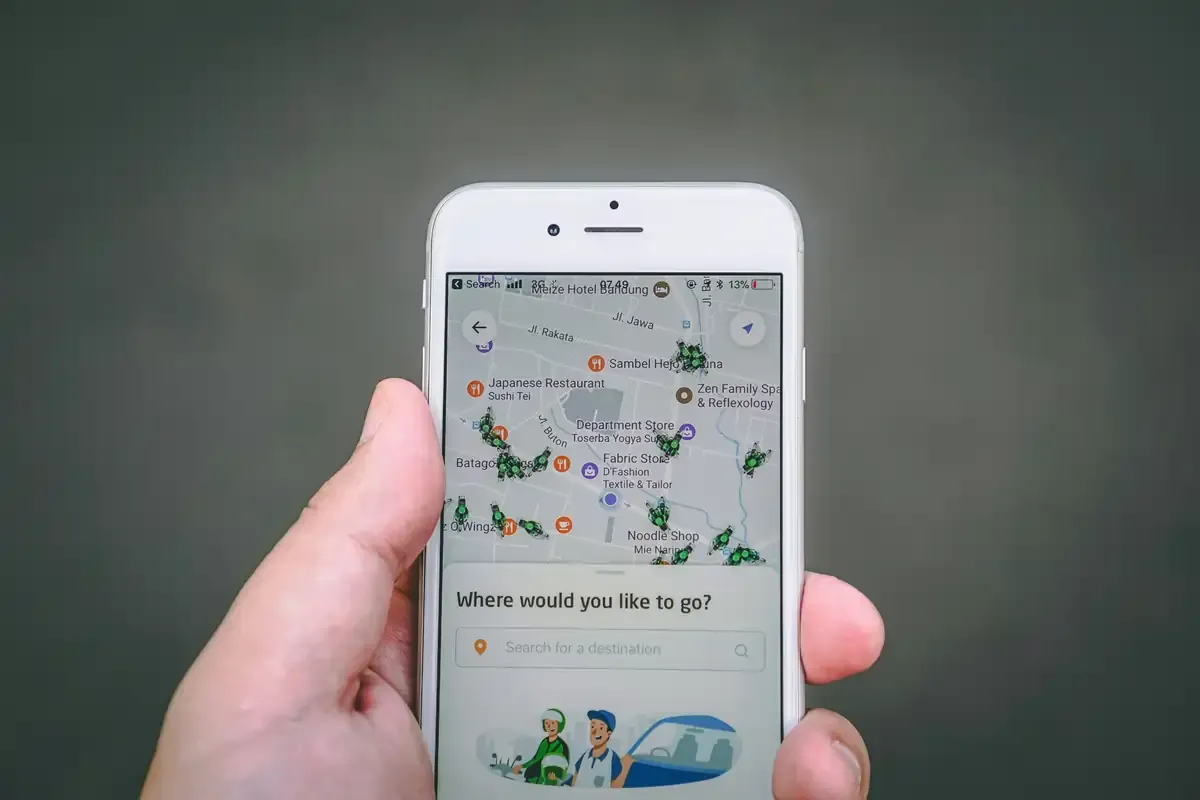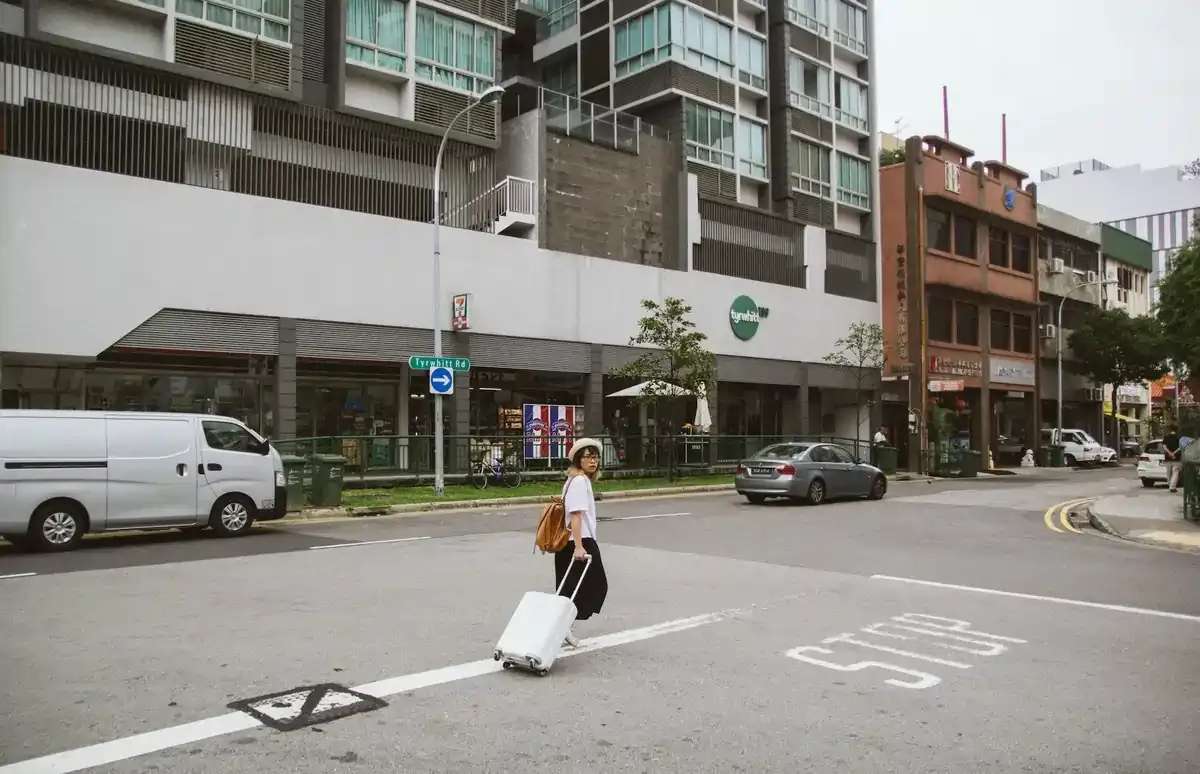travel hacks
Do You Need a Local Phone Number for Ridesharing Apps in Southeast Asia? Your Summer Travel Guide [2025]
Stay Connected & Ride in Southeast Asia: eSIM Tips for Using Grab & Gojek Without a Local Number
Tl;dr: No, you do not strictly need a local phone number to use ridesharing apps in Southeast Asia.
Whether you're island hopping in Thailand, wandering the backstreets of Vietnam, or soaking up the sun in Bali, rideshare apps like Grab and Gojek will become your go-to travel companions. Many travelers wonder if a local Southeast Asian phone number is required. Here's the answer: you don’t need one—as long as you can receive SMS on your existing number and have reliable data via an eSIM.
This guide will clarify the requirements, introduce you to the region's top ridesharing platforms, and provide essential tips for a seamless, connected summer travel experience, ensuring your rides are always just a tap away.

Navigating Southeast Asia's Ridesharing Landscape: Essential Apps for Your Summer Trip
Southeast Asia's transportation scene is dominated by ridesharing apps, offering convenience and often more transparent pricing than traditional taxis. For your summer holiday travels, understanding which apps are prevalent in each country is key to smooth transit.
Grab: The Regional Giant
Grab is the region's biggest player, offering ride-hailing, food delivery, package deliveries, even digital payments across Thailand, Malaysia, Vietnam, Indonesia, and beyond. For summer vacationers, Grab is often the go-to app for reliable and affordable transport, from quick city hops to airport transfers.
Gojek: A Strong Contender
Gojek, an Indonesian tech giant, is another significant player, particularly strong in its home country, as well as Vietnam and Singapore. Similar to Grab, Gojek offers a wide array of services beyond just rides, including food delivery and logistics. Travelers exploring these specific destinations during their summer break will find Gojek an invaluable tool for daily commutes and culinary adventures.
Other Local and International Options
While Grab and Gojek cover most of the region, some countries also have local or smaller international ridesharing apps. For instance, Bolt has a presence in Thailand, offering competitive fares. In Singapore, you might encounter Ryde or Tada. It's always a good idea to check which apps are popular in your specific summer destination within Southeast Asia before you arrive.
The Phone Number Requirement: Why Your Home Number Can Work for Ridesharing Apps
Ridesharing apps, including Grab and Gojek, require a valid phone number for account registration and verification. This is primarily for security and communication purposes, allowing the app to send you verification codes and enabling drivers to contact you. The crucial point for international travelers is that this number does not necessarily have to be a local Southeast Asian number.
SMS Verification: The Key to Access
When you sign up for a ridesharing app, an SMS containing a verification code will be sent to the phone number you provide. As long as you can receive this SMS on your registered number, you can successfully create and log into your account. This means your existing home mobile number (from the US, UK, Europe, Australia, etc.) can be used, provided it's active and capable of receiving international SMS messages.
This is particularly beneficial for travelers who wish to avoid the hassle of acquiring a local SIM card immediately upon arrival. You can even download the app and complete the registration process before you depart for your Southeast Asian summer holiday, ensuring everything is set up and ready to go as soon as you land.
Communication with Drivers
Once registered, communication with your driver typically happens through the app's built-in chat function, which relies on data connectivity rather than traditional SMS or calls. This further reduces the need for a local phone number for day-to-day ridesharing interactions. However, in some rare cases, a driver might attempt to call you directly. If you're using your home number, ensure your plan allows for international calls or that you have an alternative communication method ready.
Seamless Connectivity for Ridesharing with Nomad eSIM: Your Summer Travel Essential
For summer travelers heading to Southeast Asia, a data-only eSIM from Nomad offers the perfect solution for staying connected and ensuring your ridesharing apps work flawlessly. While these eSIMs don't come with a local phone number, they provide the crucial data connectivity needed for the apps to function, allowing you to retain your primary number for SMS verification.
Keeping Your Home Number Active with Nomad eSIM
Using a Nomad data-only eSIM during your travels gives you seamless data access for rideshare apps—while your primary SIM stays in for receiving SMS and calls. We have a detailed guide to walkthrough how to set up and use a travel eSIM. Briefly, here are the steps:
Here's how to set it up:
- Enable Dual SIM Dual Standby (DSDS)
- Assign Nomad eSIM for all cellular data
- Keep your home SIM active only for calls/SMS with roaming disabled This setup avoids expensive roaming, lets you keep your home number ready for OTPs, and connects you smoothly on the road
Tip: You don’t have to remove your primary SIM – your travel eSIM works perfectly without a physical SIM and here’s why we recommend not removing it.
Tips for a Smooth Ridesharing Experience in Southeast Asia: Summer Travel Edition
To make your summer travels in Southeast Asia as smooth as possible, especially when relying on ridesharing apps, consider these practical tips:
Set Up Apps Before You Go
Download and register for Grab, Gojek, and any other relevant ridesharing apps before you leave for your summer holiday. This allows you to complete the SMS verification process using your home network, avoiding any potential connectivity issues upon arrival. Ensure your primary phone number is capable of receiving international SMS.
Ensure Reliable Data Connectivity
Your ridesharing apps are data-dependent. A stable internet connection is paramount for requesting rides, tracking drivers, and in-app communication. A Nomad eSIM provides this reliable data, ensuring you're never stranded. Consider purchasing a plan with sufficient data for your trip, especially if you plan on extensive ridesharing or using other data-heavy apps.
Have a Backup Plan
While rare, connectivity issues can occur. Always have a backup plan. This could include:
- Offline Maps: Download offline maps of your destinations (e.g., via Google Maps) so you can navigate even without an internet connection.
- Local Wi-Fi: Be aware of public Wi-Fi hotspots in airports, hotels, and cafes as a temporary backup.
- Cash: While ridesharing apps often support cashless payments, having some local currency for traditional taxis or tuk-tuks is always a good idea, especially in more remote areas.
Communicate Clearly with Drivers
Use the in-app chat feature for all communication with your driver. If there's a language barrier, simple, clear messages or using translation tools can be very helpful. Confirm your destination and any specific pick-up points through the app.
Prep Beyond the Apps: Know Before You Go
In addition to setting up your ridesharing apps and ensuring you have a reliable data connection, it’s a good idea to familiarize yourself with regional norms, transportation etiquette, and connectivity options. Before you take off, be sure to check out our guide on essential travel tips to Southeast Asia that will make your summer journey smoother and more culturally informed.
Frequently Asked Questions (FAQs)
Can I use Grab or Gojek without a local SIM card?
Yes, you can use Grab or Gojek without a local SIM card. You only need a valid phone number that can receive SMS verification codes for registration, and a reliable data connection (like a Nomad eSIM) to use the app.
###What if my home number doesn't receive international SMS? If your home number cannot receive international SMS, you might need to consider alternative verification methods offered by the app (if any) or temporarily activate international roaming on your primary SIM just for the verification SMS. Alternatively, some travelers opt to purchase a cheap local SIM upon arrival solely for verification purposes, though a Nomad eSIM combined with your home number is usually sufficient.
Do I need to keep my primary SIM in my phone to use a Nomad eSIM for ridesharing?
No, you don't need to keep your primary SIM in your phone for the Nomad eSIM to work. However, it is highly recommended to keep it in your phone and simply turn off data roaming for that line. This allows you to receive SMS verification codes and calls to your primary number without incurring roaming charges, while using the Nomad eSIM for data.
Are ridesharing apps safe in Southeast Asia?
A: Generally, ridesharing apps like Grab and Gojek are considered safe and reliable in Southeast Asia. They offer features like driver tracking, in-app communication, and cashless payments, enhancing safety and convenience for travelers.
Your Seamless Summer Journey Starts with Nomad
Embarking on a summer adventure to Southeast Asia promises unforgettable experiences, and navigating its cities with ridesharing apps is a key part of that journey. While a local phone number isn't a strict prerequisite, ensuring you have a reliable way to receive SMS verification and consistent data connectivity is paramount. Nomad eSIMs offer the perfect solution, providing affordable, high-speed data across the region, allowing you to use your favorite ridesharing apps without a hitch.
Don't let connectivity concerns dampen your summer holiday. Stay connected, ride with ease, and explore Southeast Asia to the fullest. Discover Nomad's eSIM plans for a truly seamless travel experience. Travelling to multiple cities? Consider the Southeast Asia regional plan to ensure connectivity across borders!



